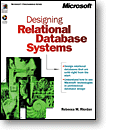
Author: Michael S. Kaplan
Editor: SAMS (White Book Series)
Lenght: 645 pages + CD-Rom
Release: September 2000
ISBN: 0-672-31977-2
Home of the book
Good for me that the supposition didn't confirm to be real, and the beginning of the book with the glossary helped a lot on that, because there was in my head a lot of confusion on some of the terms, and that caused some problems reading some articles on this same subject, but with all the explanation up front I felt more comfortable progressing...
And then you start reading Part I and you find stuff and problems that you have known about and that you have felt on your day to day basis, and how well they are explained. Plain English that everyone can understand, growing pace on knowledge that the author start introducing without me perceiving the fact. Eventually you realize you are understanding things that you never imagined that you would understand in the first reading, and you do not have to go over it again and again to understand what is being said. When you finish reading a part, you get the feeling that you learned a lot.
BIG QUESTION: Why do I think that reading this book is important? The US is a very big country and everyone speaks the same language, they tend to forget that there are other languages in the world, besides English. In Europe where I live the countries are smaller, and they all have different languages and customs. The European Community is opening many markets for developers, because many companies are expanding to other countries in the EC, and the ones that don't follow this trend will surely be crippled. Companies are thinking more and more about having clients in different countries with unique languages and customs. In the same way, the WWW is opening an even more vast market, almost in the same manner.
Even if you don't have an immediate need for a international application, it is far better to know what can be done and what are the problems are that you will be facing, and the book will help you perceive this problems. And if you are urgently in need of developing such applications, the book gives hands on solutions, with lots of examples ready to work that will save you a lot of time. This will let you concentrate much more on the application and not so much on the internationalization of it.

Author: Rebecca M. Riordan
Editor: Microsoft Press
Lenght: 295 pages + CD-Rom
Release: September 1999
ISBN: 0-7356-0634-X
Home of the book
Building a fundamentally correct Database System is not an easy task. I think that even experienced people do have their doubts about what would be the best solution to a particular problem. Because there are not any pre-made solutions for every application, each case must be looked at independently and will have different solutions. Additionally, I believe that many of the problems with the database schema will only show up very late in the development cycle. At this point itís very difficult to make major changes the underlying schema because you've already laid the foundation for your application.
If the design of the schema is a difficult task then the solution is reading, and learning about the subject. In my opinion the problem here is that many of the texts that Iíve read are too much theory and are not focussed on the real problems experienced in the day-to-day workplace. This is what I think is one of the strongest points in this book. The author has 17 year of experience in the design of database systems. This gives her the chance of understanding first hand what the problems are faced in the real world and combine that with a solid comprehension of the theory of design. The result is the best of the two worldís, making this text a fundamental reference for the design of working database systems.
Another important issue to point out is that the text of the book is so interesting, that you can pass the book to memberís of the team not responsible for design, so they can understand the why certain issues are handled in a specific manner.
The book is divided in three main subjects Relational Database Theory, Designing Relational Databases Systems and Designing the User Interface. Up front I think that the inclusion of the last part is a major improvement and makes the difference between a purely academic approach and real world approach.
In my opinion this is not the ultimate word in any of the 3 main subjects, and further I think that this was not the intention of the author of the book. This text will bring organization to the reader's concepts of database design and a stepping stone to better understanding the underlying theory. Those readers wishing to continue their education will appreciate the excellent bibliography at the end of the book.
Well if my personal experience means anything, I was very pleased after reading this book. I've changed a lot of the ways our group of developers approached designing databases. The book was a great help organizing our concepts of database design and more importantly it helped a lot in consolidating the way we plan our new projects.
In my humble opinion, this is a "MUST BUY BOOK".